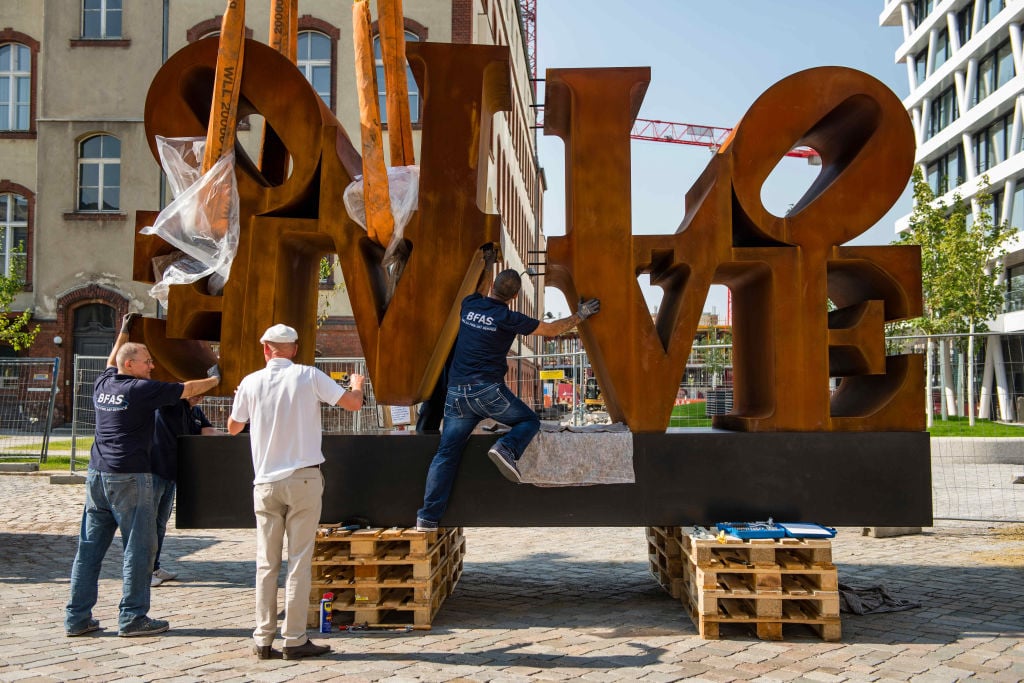
Everyone who travels knows about carbon offsetting. At the end of the process of booking a flight, the airline provides a box, for a few dollars more, to offset the carbon emissions of your flight. Sometimes I check it, sometimes I don’t, but I always wondered, where does that money go? Does that small amount really offset the damage to the environment inherent in flying long distances? It’s an issue the art world, where flying is essential, is increasingly looking to understand.
In 2018, the Intergovernmental Panel on Climate Change released a report concluding that to limit global warming to the 1.5 degrees Celcius set by the Paris Agreement, the world needs to stop emitting carbon dioxide, and other greenhouse gases, by 2050. Some sectors, such as electricity, are rapidly decarbonizing through the move to renewables, but others, like aviation, will find it more difficult. To get to “net zero,” or “carbon neutrality,” CO2 will need to be taken out of the atmosphere to compensate, hence the need for offsetting.
Many major companies, including Microsoft, Delta Airlines, and Google, have committed to carbon neutrality, partly through the use of offsets; indeed, offset consultancy Climate Care has reported a ten-fold increase in offsetting over the last 18 months. Individuals and businesses in the art industry are also debating the merits of offsetting initiatives. As we look to reduce carbon emissions across the art world, how can we make a meaningful impact?
Mahogany tree seedlings ready for planting out in Brazil. Photo by Universal Images Group via Getty Images.
Offsetting comes in many forms. There are natural solutions, such as planting trees and conserving forests. Nobody doubts these are beneficial for the environment. But trees take 30 years to reach maturity; forests can burn down or be killed by pests. A recent report for the German government suggested it is very difficult to know if a forest is in danger of being chopped down, and protecting it may just result in de-forestation in another area. Clearly we want to preserve these environments and increase the number of trees on the planet, but should organizations really claim “carbon neutrality” on this basis?
The UN-supported certification body for carbon offsetting projects, Gold Standard, offers verified offsetting projects, including forestry, renewable energy, and an interesting category—cooking stoves. These stoves help the poorest households in the world by reducing the amount of wood they need to use, as well as lowering the noxious fumes in their houses and reducing the amount of time they need to spend transporting wood. These schemes are attractive as they promote climate justice—the acknowledgement that the Global South is paying for emissions from the Northern hemisphere. Again, cooking stoves are clearly a good thing. But the amount of emissions they reduce is generally acknowledged to be low.
There are also mechanical projects designed to take carbon out of the atmosphere. For example, financial services company Stripe has contributed to Climeworks, a Swiss company that sequesters carbon from the atmosphere in basaltic rock. At the moment the technology is very expensive, and costs $775 per metric ton of carbon; they hope with scale and investment this rate could come down in the long term to $100–$200 per ton.
Is There a Better Way?
Last year, Caius Pawson, founder of the Young Turks record label, gave me a book about an environmental charity, ClientEarth, that uses the law to create a sustainable planet. They argue that the commitment to the Paris targets already exists, but governments and companies are not acting fast enough. By taking them to court, ClientEarth are policing their actions, making sure that these commitments are met.
ClientEarth’s actions have been extremely effective. Amongst other initiatives, they have targeted the largest emitter of carbon dioxide—fossil fuels. In 2019, Europe’s nine top emitters were coal-fired power plants. The tenth was the entirety of Ryanair’s flights. Last year, ClientEarth won a court case in Poland, obliging Europe’s largest coal power station, Belchatow, to reduce emissions to zero. They are now targeting other coal power stations around the world.
It made me think—could we create a new type of offset? If organizations are contributing money to carbon reduction, what’s the most effective use of these funds? ClientEarth estimates the cost of a court case at $250,000. To offset an equivalent amount of carbon to a cancelled coal power station, $300 million worth of trees would need to be planted. A contribution to ClientEarth is potentially over 1,000 times more effective than one towards forestry initiatives.
So how does this affect the art world and its desire to work towards a sustainable planet? With the carbon calculator recently launched by the Gallery Climate Coalition, artists and galleries can make a good estimate at their carbon footprint. The calculator will clarify where reductions can be made, and this must be the first step. (As well as cutting emissions, it could save money, for example by shipping via sea rather than air.) A value can then be attributed to the remaining footprint. Estimates of the appropriate cost of carbon varies dramatically, from $2 to $150 per ton of CO2. The GCC recommends a mid-point of $65 a ton, based on a recent paper from the London School of Economics. This equates to an estimated cost of 0.1-0.3 percent of an organization’s revenue.
If the art world collaborated and donated to ClientEarth or similar organizations, it could make a real impact—millions of tons of global carbon reductions could be made. And rather than take criticism for its excesses, the art world could lead the creative industries, helping to drive systemic, rather than piecemeal change.
Matthew Slotover is co-founder of media and events company, Frieze, and a founding member of the Gallery Climate Coalition.